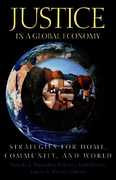Question
Part A: Multiple Choice. 15 marks. Each question is worth 3 marks. 1. Random Walk exchange rates imply a. deviations from PPP can be permanent.
Part A: Multiple Choice. 15 marks. Each question is worth 3 marks.
1. Random Walk exchange rates imply
a. deviations from PPP can be permanent.
b. deviations from PPP may only be corrected by offsetting random shocks
c. both (a) and (b).
2. Suppose S0 = 1.32, i = 0.062, i = 0.073 then E0S1 equals
a. 1.4328
b. 1.3065
c. 1.6893
3. Suppose domestic consumption rises and there are restrictions on holding foreign assets then with a floating exchange rate, in the long run the Fleming-Mundell model predicts
a. a rise in Y and a fall in X M.
b. depreciation of the domestic currency, a rise in Y and a rise in X M.
c. jumps in the domestic interest rate and a rise in X M.
4. Purchasing power parity is more likely to hold when
a. exchange rates are a random walk.
b. countries are geographically close.
c. countries have different consumption patterns.
5. Suppose foreign consumption rises then with a fixed exchange rate the supply-demand model of exchange rates predicts
a. a rise in domestic central bank reserves of foreign currency and rise in domestic net exports.
b. a fall in domestic central bank reserves of foreign currency and a fall in domestic net exports.
c. a fall in the domestic money supply.
Part B: Numerical Problems. 20 marks (5)
1. Consider the following direct quotes: 95.83 yen per CAD, 1.04 CAD per USD and 98.56 yen per USD. Calculate the cross rate between CAD and USD using the yen as an intermediate currency. Is there an opportunity for triangular arbitrage? (5)
2. The Canadian dollar-Euro exchange rate (Canadian dollar price of euros) is currently 1.26. In 4 months time the exchange rate will be either 1.28 or 1.24. A European call option on euros expiring in 4 months has strike price K = 1.25 CAD per euro. The risk free rate in Canada is 2 percent per annum and the European risk free rate is 1 percent per annum. Solve for the option price in the one step binomial model.
3. Suppose the Canadian dollar-Euro spot rate is S0 = 1.38 CAD per euro. The one year dollar-Euro forward rate is F0,1 = 1.39 CAD per euro. The one year interest rate in the Canada is 2 percent; in Europe the one year interest rate is 1.8 percent. (5)
a. Suppose an investor has 500,000 Canadian dollars to invest then converts it to euros at the spot rate, invests the resulting capital at the European interest rate for one year and converts the proceeds back to CAD at the forward rate. Determine returns from this trade. (5)
b. Suppose the investor buys one year Canadian Treasury securities with the 500,000 instead. Determine whether this strategy or the one in (a) generates greater profit. Based on this calculation explain in a sentence whether this forward rate is the equilibrium rate.
Part C: Theoretical Problems. 65 marks.
1. Assume that capital is perfectly mobile. The foreign and domestic economies are initially at potential GDP. The domestic economy is small and the foreign economy is large. Using the AD-AS model analyze the long run impact on domestic X M, I, C, Y and P of the following independent shocks. (10)
a. Suppose domestic consumption depends positively on real wealth meaning that rises in real wealth increase consumption. Let investor fears cause a domestic stock market crash. Assume the exchange rate is fixed. (10)
b. a fall in the foreign money supply M . Assume the exchange rate is floating.
2. Using diagrams analyze the impact on domestic Y and i of the following independent shocks in the Fleming-Mundell model. (5)
a. Investors believe that in the foreign economy a left wing government with unsound economic policies will replace the pro business government. There is a fixed exchange rate and perfect capital mobility. (5)
b. Foreign preferences for domestic goods falls. There is a floating exchange rate and imperfect capital mobility. (5)
c. For the shock in (b) state the long run effect on domestic investment I.
3. Compare the short and long run effects on the depreciation rate of the domestic currency for the following independent shocks. Expectations are adaptive. (5)
a. The foreign money growth rate rises. (5)
b. The price of oil experiences a transitory rise. Assume the domestic economy is more dependent on oil than the foreign economy. (10)
c. For the shock in (a) compare short and long run depreciation of the domestic currency if investors have Rational Expectations.
The foreign and domestic economies are initially at potential GDP. The domestic economy is small and the foreign economy is large. The exchange rate is floating and capital is perfectly mobile. Assume a Keynesian model so that adjustment to any shock is lagged. Using the AD-AS model analyze the short run impact on domestic X M, I, C, Y, P and E for the following shock: Environmental toxins discharged into water result in 15 percent of domestic farmland being rendered useless for cultivation.
Step by Step Solution
There are 3 Steps involved in it
Step: 1

Get Instant Access to Expert-Tailored Solutions
See step-by-step solutions with expert insights and AI powered tools for academic success
Step: 2

Step: 3

Ace Your Homework with AI
Get the answers you need in no time with our AI-driven, step-by-step assistance
Get Started


